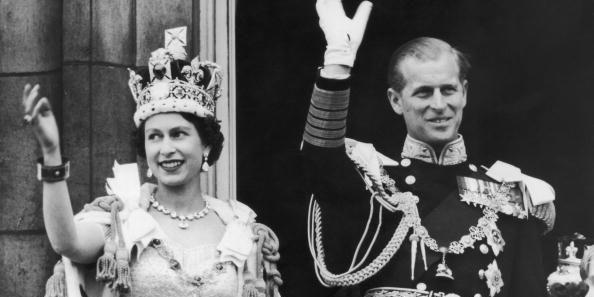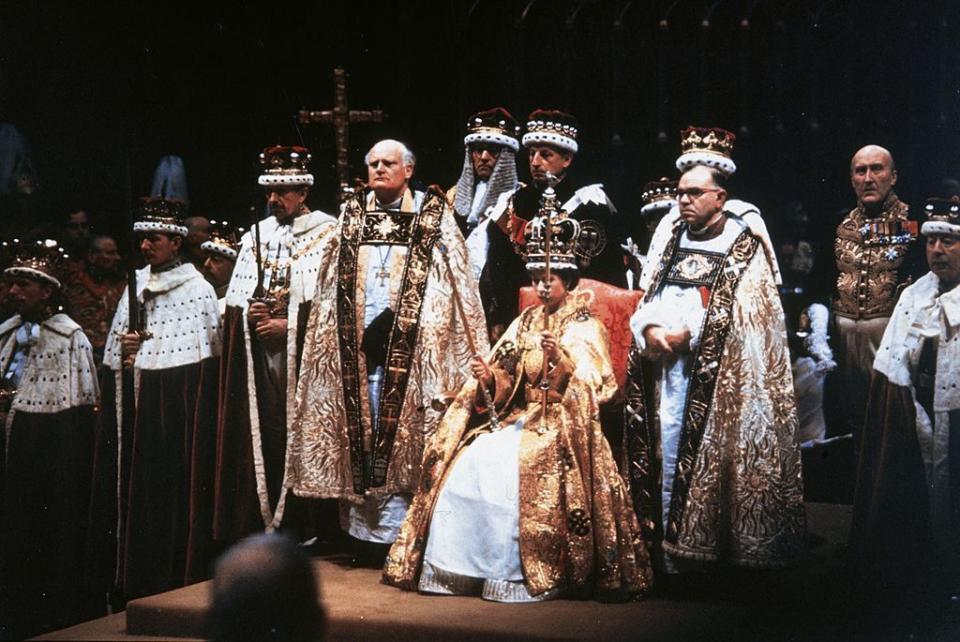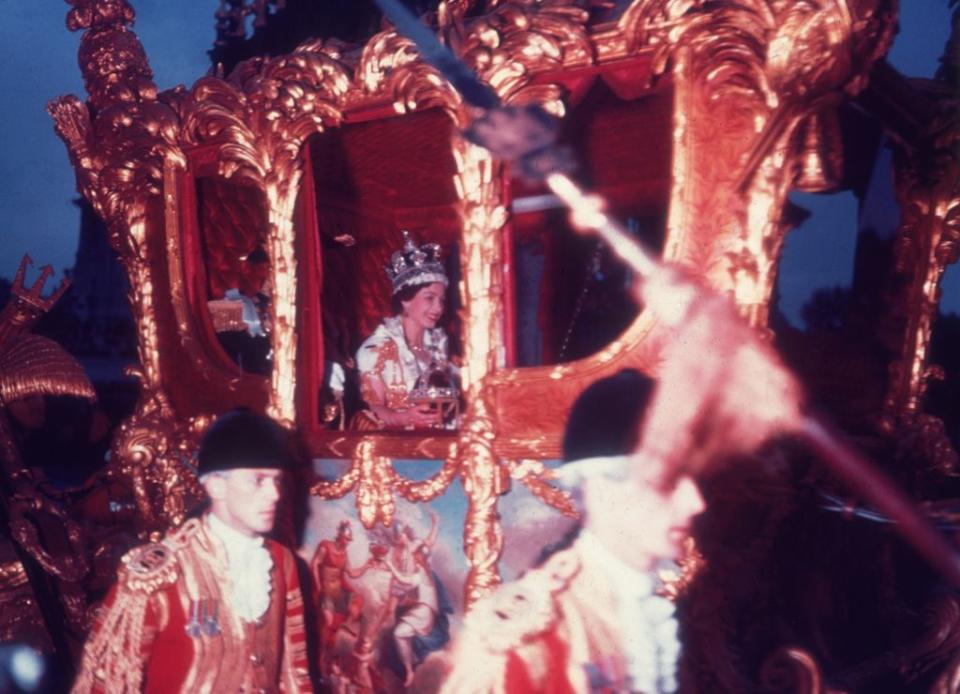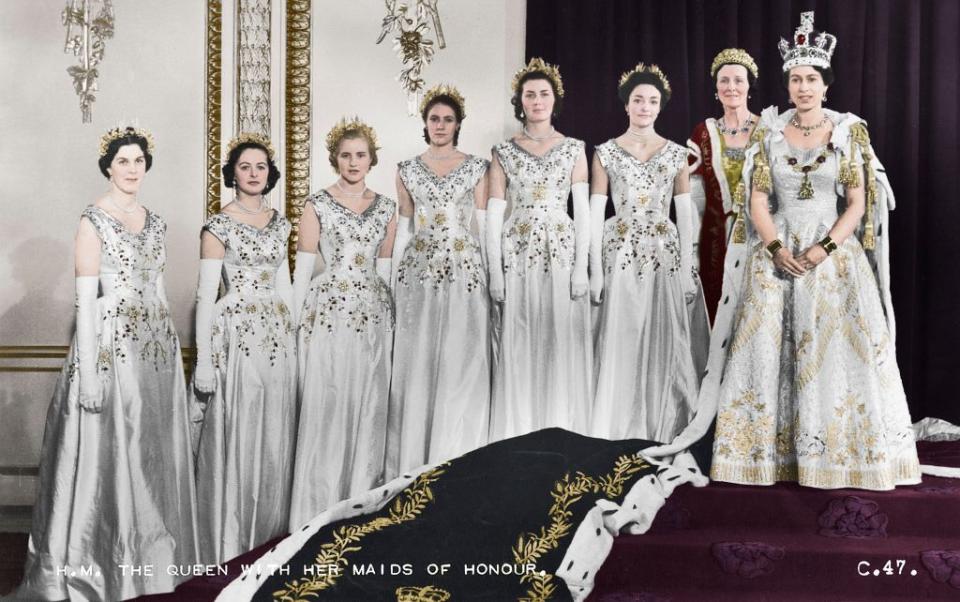21 unique facts about Queen Elizabeth II’s coronation

Queen Elizabeth II was the longest-serving British monarch in history, ruling with her unique blend of quiet power, sense of duty and a sprinkle of good humour, for more than 70 years.
Her Majesty became Queen at just 25 years old when her father, King George VI, died while she was away in Kenya in 1952. This made her the first Sovereign in more than 200 years to accede to the throne from abroad.
To officially mark the occasion, The Queen’s much-anticipated Coronation was planned for the following year, and many saw it as the marker of a brighter new era following the Second World War and resulting austerity. As well as being major historical moment for the nation, it was also a memorable and poignant event for Her Majesty herself.
In her radio message on the evening of her Coronation, Her Majesty said that the ceremony had served as “a declaration of our hopes for the future, and for the years I may, by God's Grace and Mercy, be given to reign and serve you as your Queen.”
When was The Queen’s Coronation?
Queen Elizabeth II’s Coronation took place on 2 June, 1953, 16 months after the death of her father when she automatically became Queen. The ceremony took place at Westminster Abbey, making her the thirty-ninth Sovereign to be crowned there.
21 unique facts about The Queen’s Coronation
We’ve researched through the archives to find long-forgotten books, original programmes and more to bring you some of the little known facts about the Queen’s coronation which you won’t find anywhere else.

1. The early summer date of the The Queen’s Coronation (2 June) was chosen in the hope of fair weather for the many spectators who would want to line the streets to celebrate. Of course, the Great British weather had other ideas, and it ended up being a wet and rainy day. However, this did nothing to dampen the spirits of the public, as thousands of spectators came out to support their new Queen.
2. Westminster Abbey was closed for five months ahead of the Coronation to prepare for the event. This involved felting and boarding the floor as well as various monuments in the building to avoid damage, before laying a railway track down the centre. This allowed workers to transport the heavy wood, metal and scaffolding materials needed to construct the seating levels and staging for the immense ceremony.
3. One of the largest pieces of staging for the Coronation was a special carpet (made in Glasgow) which, at 118 feet long and 17 feet wide, weighed a staggering five tonnes.
4. The carpet wasn’t the only specially-made item for the Coronation, as 2,000 chairs and 5,701 stools were required to seat the thousands of guests. The padding of each chair was specifically made up of 12% horse mane hair, 12% cow tail hair and 76% American Grey Winter Hog hair.
5. There were thirteen clocks provided in the Abbey which were electronically linked so they all told exactly the same time.
6. Queen Elizabeth II’s Coronation at Westminster Abbey actually began at 4am, with a special breakfast for the Stewards who would be overseeing the day’s event. They were given a 5.30am briefing before guests began arriving at 6am. The doors to the Abbey were closed to guests at 8.30am, even though the service wasn’t due to begin until 11.15am, so guests had a long wait for the action to begin.

7. In a later interview, The Queen described her ride to Westminster Abbey in the Gold State Coach as “horrible” due to the discomfort of the seating, adding, “it’s only sprung on leather.” The coach was drawn by eight grey gelding horses and their names were Cunningham, Tovey, Noah, Tedder, Eisenhower, Snow White, Tipperary and McCreery.
8. The Queen wore a special Coronation dress which was designed by Norman Hartnell, who also made her wedding dress. The ornate dress featured emblems for each part of the United Kingdom: a rose for England, thistle for Scotland, Shamrock for Ireland and daffodil for Wales. The emblems were embroidered in pastel-coloured silks with jewels, beads and sequins. After her Coronation, Her Majesty wore the dress six times for various events throughout her life.
9. On her way to the Abbey, The Queen wore the George IV State Diadem, which features 1,333 diamonds and 169 pearls. This is her most recognisable crown, as it is the one she can be seen wearing on stamps. She also wore the Coronation Necklace and Earrings which were originally made for Queen Victoria in 1858. These jewels were especially poignant as they had been worn by Queen Alexandra, Queen Mary and Queen Elizabeth (The Queen Mother) at their coronations as Queen Consorts.
10. The Queen’s Coronation bouquet comprised of various white flowers including Welsh orchids, Northern Irish carnations, English lilies-of-the-valley and Scottish stephanotis. It was made by Martin Longman and was presented to Her Majesty by the Worshipful Company of Gardeners.

11. Queen Elizabeth II had six Maids of Honour at her Coronation, who carried the long train of her robe as she walked down the aisle of the Abbey. They wore specially designed dresses (also by Norman Hartnell) which co-ordinated with Her Majesty’s own, as well as headdresses made of gold and white silk leaves and flowers.
12. There were 18 pieces of music comprising of anthems and hymns during the Coronation service. As well as expressing a sense of celebration, the tunes were used to mark different points of the ceremony. For instance, Her Majesty entered Westminster Abbey to the anthem, “I was glad when they said unto me,” while she exited at the close to a rousing rendition of “God Save the Queen.”
13. Queen Elizabeth II’s Coronation was the first to be broadcast on television and, for many, it was the first event they watched on TV. At the time, the population of the UK was 36 million, and 27 million across the nation tuned in to watch.
14. At the end of the long Coronation ceremony, a special royal lunch was organised in the annexe attached to Westminster Abbey. However, it nearly didn’t take place as the staff bringing the refreshments over from Buckingham Palace forgot their security passes and had to talk their way into the venue.
15. A special procession route was planned through the centre of London spanning 7.2 kilometres. The procession took two hours and featured 16,000 participants including Church leaders, Prime Ministers from the Commonwealth and members of the military.

16. Jackie Kennedy, former First Lady of the USA, was one of the 2,000 journalists and 500 photographers covering the Coronation from 92 different nations. In 1953, she was still Jacqueline Bouvier and was reporting for the Washington Times-Herald.
17. Prince Charles received a hand-painted invitation to his mother’s Coronation, but Princess Anne was too young to attend. While the official photographs were being taken after the ceremony, the Queen Mother kept the children entertained by letting them ride in the train of her robe. Held up by royal pages, they sat in the middle and were carried up and down the corridor.
18. Many of the guests brought picnics and snacks with them to the Coronation ceremony. It turned out some of the 2,000 invited peers and peeresses had decided to bring a tipple along too, as lots of miniature bottles of gin and whisky were found amongst the litter surrounding their chairs after the service.
19. Following her Coronation, Her Majesty appeared on the balcony of Buckingham Palace with other members of the Royal Family to wave to crowds, while an RAF fly-past took place. She gave another appearance later on in the evening, to turn on the ‘lights of the London’. Firework displays over the Thames continued the celebrations into the night.
20. When describing his memories of The Queen’s Coronation, her husband, Prince Philip said that “much of that day certainly remains rather a blur in my memory, although I have the most vivid memories of individual incidents.” He also declared it, “one of the greatest ceremonies the Abbey has ever witnessed.”
21. At 9pm on the evening of the Coronation, a special message from The Queen was broadcast on the radio, reflecting on the events of the day. She thanked those who had come out to see her or who were watching at home for their support, saying, “It is hard for me to find words in which to tell you of the strength which this knowledge has given me.”
Her Majesty ended her address by saying, “As this day draws to its close, I know that my abiding memory of it will be, not only the solemnity and beauty of the ceremony, but the inspiration of your loyalty and affection. I thank you all from a full heart.”
You Might Also Like


